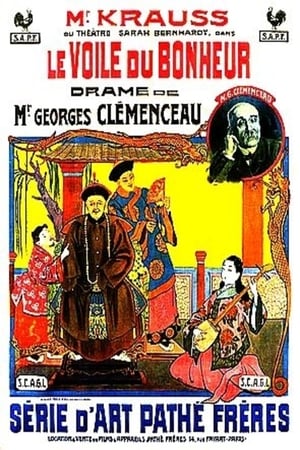
Madeleine Carlier
Biography: Biography not available
Place of Birth: Not available
Birthday: June 17, 1878
Deathday: June 17, 1935
Popularity:
Known For

The Veil of Happiness
1910-12-09
The Veil of Happiness

Overview: A Chinese mandarin named Chang is blind and finds his only happiness is the caresses of his wife and the adoration of his son. One day, while out walking with his servant, Chang comes across a sorcerer who recognizes his rank and begs to be allowed to give the great man a potent liquid which will restore his sight. Chang submits to the administration of the sorcerer's cure and in a moment, for the first time in his life, he beholds the beauty of the world; everything about him holds untold ecstasies for his unaccustomed sight. He finds beauty in the very soil on which he walks. Hastening home he admonishes his servant not to say anything, but decides to surprise his family. Stealing into the house he peeks through the door into the study where his son and his tutor are supposed to be at work. There he witnesses his son's burlesque of his own helplessness and the tutor crawling on the floor in mirth. In the garden he discovers his young wife in the embrace of a neighboring mandarin.
Genres: Drama
Original Language: fr
Release Date: 1910-12-09
Popularity:

La danseuse de Siva
1911-01-01
La danseuse de Siva

Overview: Stacia Napierkowska (1886-1945) was one of the most successful of the many dancers who appeared onstage, in Paris and internationally, as Hindu priestesses, Esmeraldas, Greek nymphs and maenads, oriental harem favourites or Cambodian temple maidens. After her film debut in 1908, she quickly became a film star, first with Pathé and later with Film d’arte Italiana, creating her own roles in the manner of pantomimes; at the same time she continued her brilliant stage career. Napierkowska was an influential fashion leader, and her dark slender beauty certainly looks like the role model of Josette Andriot. La Danseuse de Siva (1911), a film by Albert Capellani deemed to be lost until recently, has been identified by Tamara Shvediuk in the collection of the Gosfil’mofonds. The print originally belonged to Sergey Ivanovich Osipov, a cinema owner and distributor.
Genres: Drama Romance
Original Language: xx
Release Date: 1911-01-01
Popularity: